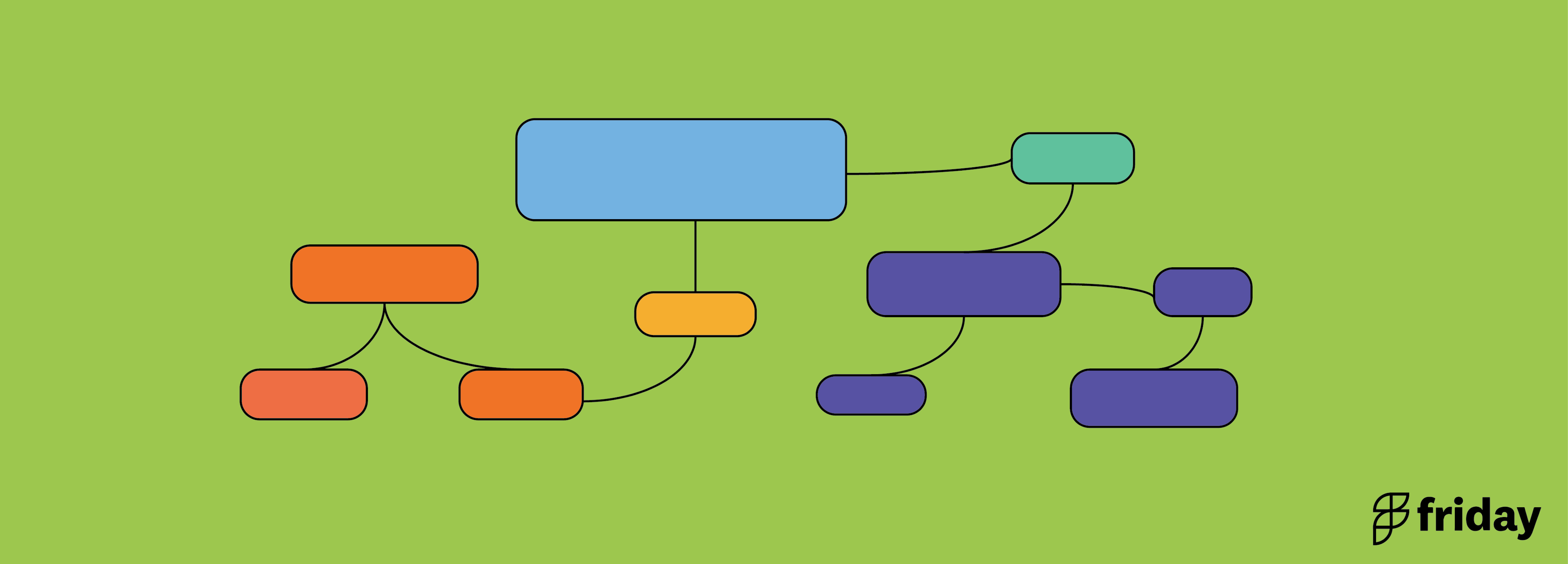Take Note: How to Get Great at Meeting Notes (Full Guide)

If you’ve ever watched an episode of Law & Order you already know the best way to take great meeting notes would be to hire yourself a stenographer. But when the task falls to you, it can be a challenge to capture everything that takes place in a meeting or Zoom call.
This desire to take better notes is one of the reasons why we launched Posts, a forum discussion board for work. It’s also why we’ve taken a deep dive into ways you can jot down meeting notes to keep you and your team informed and ready for projects ahead.
BTW: Try Posts in Friday to help with your meeting notes, company announcements, and brainstorming. It’s the perfect complement to Slack!
The Note Takers You Don’t Want To Be
Some people are really good at taking notes. Some aren’t.
Do you fall into one of these categories?
Write-It-All-Down Walt
Are you seized by fear that you’re going to miss a key aspect of the meeting agenda, so you record everything verbatim, even the social chit chat at the start of the call?
Relax, Walt. Not only are you driving yourself nuts with pages of notes, but there are better ways to retain information and stay well informed.
We know that effective communication is key to working efficiently with a distributed team, but that doesn’t mean we need to know what everyone had for breakfast.
The It’s-All-Up-Here Harriet
Ever sit in a meeting with someone that doesn’t once lift their pen or tap a single word on their laptop? They either have an encyclopedic mind or they’re just counting on coworkers to debrief them.
Don’t be like Harriet. We’ll teach you how to take notes that are so good you’ll want to share them.
The Uber-Unorganized Ulla
Some people take notes at every meeting. Only they don’t know where they put them. Or saved them. Was it in a new note taking app on their iPad? No, it was definitely on their phone. Or maybe it’s on an undated page in their notebook.
Finding an organized system that works for you is the key to note-taking glory.
If you want to be good at taking notes, you’ve got to take pre-notes also known as prepping your notes before the meeting takes place.
This can come in the form of mapping out your notepad or creating an agenda. You should also check out the meeting minutes beforehand.
Don’t go into a meeting blindly when you can set up your note taking space with details you may already have.
This list could include:
- Meeting topic and date
- Stakeholders who will be present
- A list of questions you want to make sure to ask
- Bullet points from the brief (if there is one)
- Deadlines
If this information isn’t readily available, you can still leave space for them in your meeting notes to be filled out once the meeting starts.
This is especially important if you rely on asynchronous meetings. An organized list of notes makes it easier to share with others, retain information and keep team members in the loop.
Pick Your Poison: Handwritten Notes VS. Digital Notes
As a notetaker, you undoubtedly already have a style. Either you’re a notebook nut who has to use a pen or pencil to jot stuff down. Or you’re a digital devotee who can’t imagine going into a meeting without your Evernote open.
There are stats about why one might be better than another.
Even the data scientists at UCLA and Princeton studied this, ultimately finding that students who took notes on laptops performed worse on conceptual questions than students who took notes longhand.
But if you can’t remember the last time you used a pencil and paper in a meeting, there’s no sense in starting now. Using the medium you’re most comfortable with is the best place to start.
“I'm super picky about my note taking and believe we all should be. My notes are a hybrid of digital and paper. I use a black and white tablet that acts like pen and paper but archives the notes and translates them,” says Fred Dust, author of Making Conversation. “I firmly believe that typing everything that someone is saying is not note taking, it’s typing.”
Effective Note Taking Does Not Mean a Word for Word Account
If you were one of those students who had to write down every single word their professor spoke in order for the subject matter to sink in, we hear you.
We were taught at a young age that note-taking meant being able to capture what we’d later be tested on. If you think back to your high school days, it’s easy to conjure up a classroom of hands rapidly moving back and forth over loose-leaf paper. By high school, if you didn’t have carpal tunnel from your note-taking skills, you likely weren’t an A student.
But it’s time to put that destructive teenage behavior away for good. Here’s the key things you should be jotting down in a meeting.
Concepts
Write down any new concepts/key points introduced in a meeting that you may want to follow up on or research more later.
Keywords, Not Word for Word
You don’t want to write down everything verbatim, but instead start to jot down keywords that continue to pop up throughout the meeting.
Milestones
Make sure to jot down any dates or deadlines that are relevant.
Stakeholders
Who owns what? If that’s established in the meeting, make a note of it for future reference.
Questions
Write down the questions posed in the meeting, not just questions that you might have afterwards. After reviewing your notes, you might have some follow ups that would be better asked in a discussion using Posts or via Slack. After all, fewer meetings is always the goal!
Next Steps
Almost every meeting has a wrap up of what’s to come. Since a primary focus of note taking should be future tasks, these are always important details to record.
Personal To-Do’s and Action Items
If you’re called out to take on an action item or assigned a new task, write it down. You’d think it’d be the easiest item to remember, but it’s really easy for something to slip your mind hours later if it hasn’t been recorded.
Assign a Note Taker. Or Don’t.
If you have a project manager on your team whose job is to really capture key takeaways and tasks from a meeting, you might not need to be the best note taker in the group.
But there’s an argument for making sure everyone is capturing notes in a meeting.
“I believe that the people who are going to do the work should be in the meeting about that work. So when my team works with an outside company, anyone who's going to work on that project is invited to that meeting,” says Dust.
“My team can take notes anyway they feel works best for them. What's remarkable about what emerges is that when we come back together there's almost a three-dimensional aspect to our recollection as we all fill in for the places others are fuzzy on.”
Set a precedent before the meeting that there is one key notetaker or that your entire team is expected to jot down notes to share later on.
The Art of Note Taking
Have you ever found yourself in a meeting, rustling through a notebook or searching your Google documents for keywords because you know you had notes about something, but you just can’t find them?
Same.
When it comes to good meeting notes, there’s always room for improvement.
Here’s a few tactics you can try out next time.
The Cornell Note-Taking System
A Cornell University professor adopted this system of note-taking in the 1950’s and it remains a stronghold method to this day.
In general, your paper is broken down into 3-4 sections. A title and date at the top, a small section in a column at the left for questions, a main section next to that for general notes and at the bottom, space to summarize the meeting.
This is effective because it allows you to take notes and then summarize the meeting in your own words. Not only does this help in retaining knowledge, but you walk away with a better understanding of the meeting too.
Use It For: Meetings that introduce new concepts so you can easily reflect on next steps and also organize your questions.
The Four Squares
Also known as quadrants, also known as Bill Gates’ favorite method of notetaking (supposedly).
The concept is super simple: divide your notes into four equal sections.
One section is for questions, another for notes, a section for personal to-do’s and a final section for assignments for others.
Use It For: Team meetings. This is a great way to take notes in a meeting that will require lots of actionable items and stakeholder assignments.
Mind-Mapping
We also like to refer to this as “doodling with a purpose”.
Write down the main theme in the center of the page. From there, create branches of sub ideas and then branches of sub ideas from those sub ideas.
This non-linear way of note taking is especially great for creatives or people looking to glean concepts or new ideas from a meeting.
Use It For: A brainstorm session.
Asynchronous Notes
Not every meeting takes place in real time. But that doesn’t make note taking less important.
Even if you aren’t familiar with the term, you likely have asynchronous meetings right now.
Here’s a quick definition: asynchronous meetings are meetings that do not happen in real-time (synchronous) and do not require an immediate response. They are organized, but communication is delayed (asynchronous).
There’s no real trick here. Having written communication of the meeting helps it persist. People can see what was “said” and what the decisions were. There is a record, which is crucial, especially for remote teams.
Use It For: One-on-ones, daily standups, weekly updates.
Who Benefits from Taking Meeting Notes?
Developers: Taking meeting notes is an important part of the development process. It helps developers stay organized and keep track of any conversations that take place during a meeting. This allows them to make sure they have all the necessary information for their projects, such as features or timeline changes.
Client Facing Professionals: For client facing professionals, meeting notes are important for keeping track of any conversations that take place during a meeting. This allows them to ensure they are providing the best service and staying on top of any changes or updates requested by their clients.
Thank You for Sharing Your Notes
Now that you’ve got a better handle on how to structure your note taking during meetings, the ultimate reason behind taking good notes is to set yourself and your team up for success.
Sharing options abound when it comes time to pass along and review notes.
There’s Google Drive, Slack, Asana, a good-old fashioned email.
And then there’s our personal favorite, Friday.
Friday will store your most important things at work outside of the noise. It’s your contained, organized resource to capture important items like meeting notes, updates, due dates and more.
Meeting routines on Friday capture feedback and ideas before the meeting. And with our new Friday posts, you can copy and paste your meeting notes right into the discussion to share with team members.
And with Posts in Friday, you can take notes for each of your meetings, or share company announcements.
Whether you’re back to meeting in real-time, hopping on Zoom calls or simply sharing details for asynchronous meetings, Friday can help.


